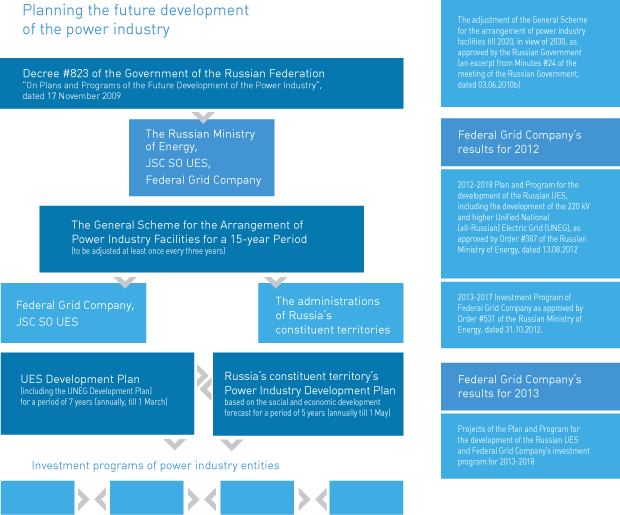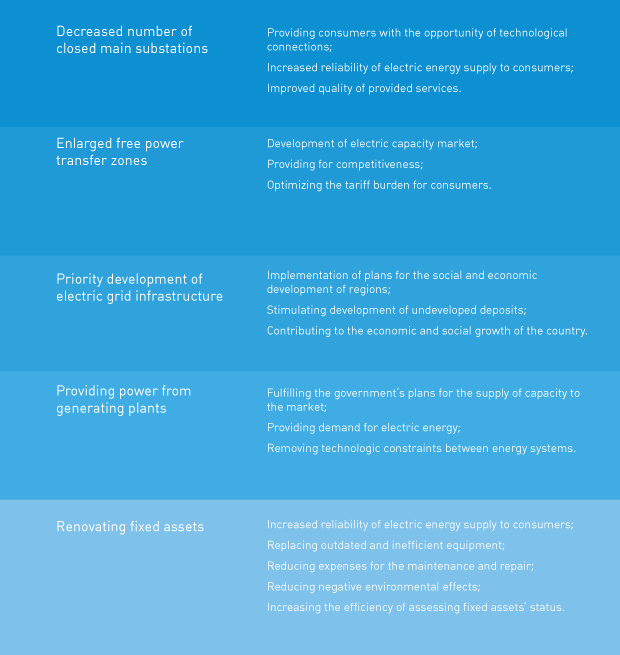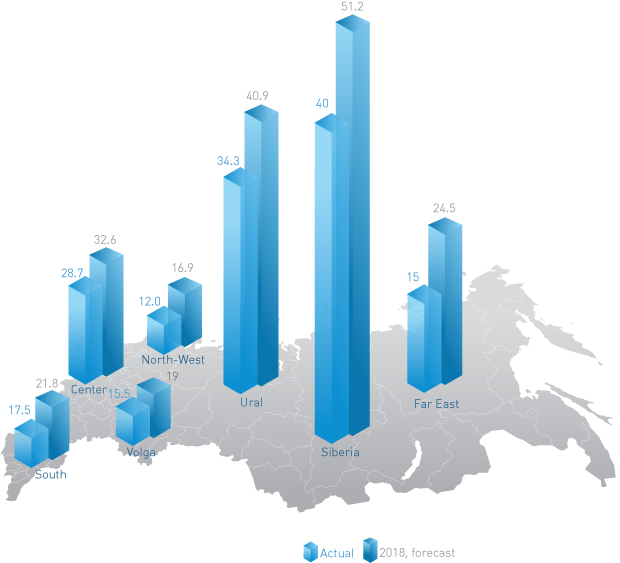Market Overview
The Situation in the Industry
The growth of power consumption started from 1998 during the recovery and development of the Russian economy (except for 2009, when the global financial crisis resulted in an energy consumption decrease). In 2012, energy consumption reached 1,016 billion kWh, while the achievement of the historical maximum of 1,073.8 kWh (1990) is expected in 2014. On 2 February 2012, the Unified Energy System of Russia registered one more record in power consumption comprising 155,226 MW, which is the maximum consumption in the entire modern history of Russia, evidencing the growth in energy and power consumption.
Forecast of energy consumption across the Russian UES for the period till 2019, billion kWh*
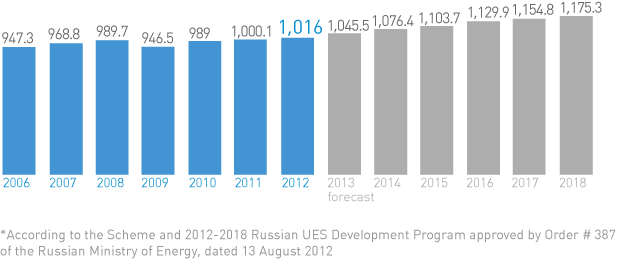
The development of the national energy sector is based on the scenario of innovative economic development. In accordance with the Energy Strategy of Russia for the period till 2030, as approved by the Russian government, it is expected that during implementation of the Strategy the dependence of the national economy on the energy sector will diminish due to the priority development of innovative energy-saving sectors, and the implementation of the technologic potential of energy saving. This will be expressed in an almost two-fold decrease in the share of the fuel and energy complex in the Gross Domestic Product by 2030 (compared with 2005).
At the same time, the energy sector will maintain its key role in making essential strategic decisions pertaining to the national development. First of all, this is so in regard to the construction of new power infrastructure that will enable accelerated social and economic development of the Eastern Siberia and Far East, and overcoming infrastructural gaps among numerous regions, thus forming new territorial and production clusters based on the development of energy-generating and processing facilities.
The decrease in dependence on the power sector will be accompanied by qualitative changes in the role of the fuel and energy complex in the national economy. The Russian power sector will maintain its influence on the social situation in the country, as the level of energy comfort and the availability of energy resources define the standards of living of Russian citizens in many respects.
Power Grid Complex (PGC) Development Trends
Based on the PGC Development Strategy (5+5 Strategy) adopted in 2006, there were three priorities formulated for the governmental policy on the Russian power grid complex, namely the following:
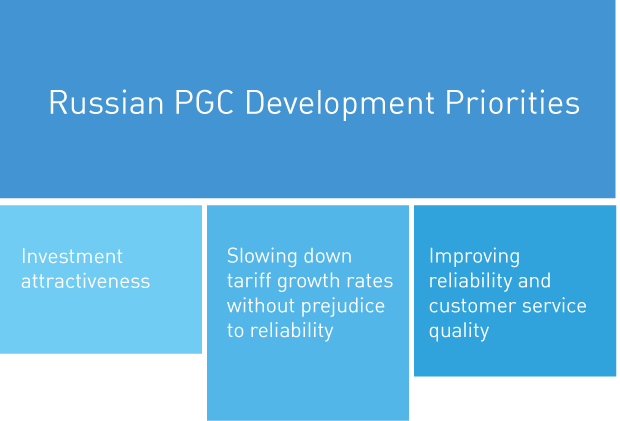
The power grid complex of Russia underwent a number of essential changes recently. Considerable investments in the grid infrastructure helped eliminate lags from the nineties, decreasing the degree of wear to the grids and improving reliability. The implementation of RAB-regulation provided for additional investments in the industry. The implementation of economic responsibility of power grid companies for the quality servicing of customers and their timely connection to power grids contributed to improvements in service quality and increased reliability of grid operations.
However, there are some tasks in the industry, such as the increase in the capitalization of sector companies that are still pending as they were put aside due to numerous different reasons, including: the economic crisis and increasing energy product prices. Furthermore, the PGC has some more pending issues, such as: cross-subsidizing, insufficient operations, the investment efficiency of companies and the last mile problem, etc. Taking these into account, it was decided to integrate major PGC companies, meaning JSC IDGC Holding and Federal Grid Company. A decree on the establishment of JSC Russian Grids was signed in November 2012. The new company is tasked with the implementation of an integrated PGC policy, the development of a common plan for the development of backbone and distribution grids, and control over the unified tariff rate and PGC management.
State Regulation in the Power Industry
The Russian government controls the power industry in accordance with the Federal Law #35-FZ “On the Electric Power Industry”, dated 26.03.2003.
The federal authorities empowered by the Russian government to exercise the State regulation of the power industry include the following:
- The Ministry of Energy of the Russian Federation (the Russian Ministry of Energy), tasked with the functions of developing a State policy on normative regulation in the sphere of the fuel and energy complex, including electric power issues;
- The Federal Service for Environmental, Technological and Nuclear Supervision (Rostechnadzor), engaged in control and supervision over the power industry, as well as licensing individual activities, and checking for compliance with Russian laws on the power industry.
The Company’s Role in Russia’s Energy Strategy
The Russian 2030 Energy Development Strategy approved by Decree #1715-r of the Government of the Russian Federation, dated 13 November 2009, is one of the key landmarks for corporate development.
The Company, jointly with SO UES, develops and submits to the Russian Government the Plan and Program for the development of the Russian UES for a 7-year period. The key task of this document is to contribute to the development of grid infrastructure and generating facilities and to meet long-term and mid-term demand for electric energy and capacity.
Key tasks of the Plan for the Development of the Unified Energy System of Russia
The 2012-2018 Plan and Program for the Development of the Russian UES implies the commissioning of 44 thousand kilometers of 220kV and higher overhead power transmission lines, including 27 thousand kilometers of 220 kV overhead power transmission lines and 17 thousand kilometers of 330 kV and higher overhead power transmission lines. Other goals include: commissioning 168.2 thousand MWA of 200 kV and higher power transformer equipment at substations.
Regional development of the 220 kV and higher UNEG grids till 2018 (length in thousand km)

